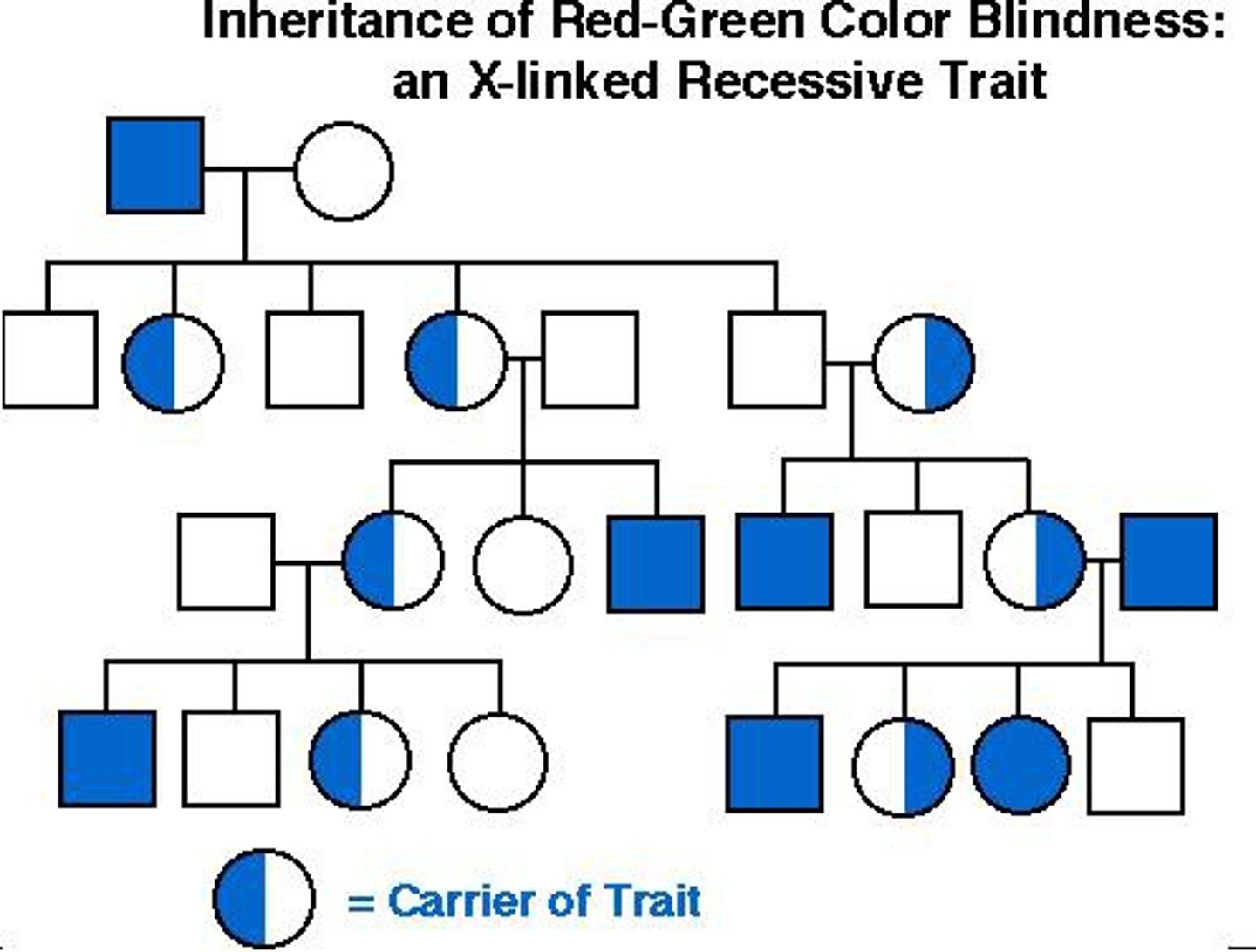Genetics Chapter 4
1/25
There's no tags or description
Looks like no tags are added yet.
Name | Mastery | Learn | Test | Matching | Spaced |
|---|
No study sessions yet.
26 Terms
sex determination
The process in which certain factors govern whether an individual develops into a male or female organism.
sex chromosomes
A pair of chromosomes (e.g., X and Y in mammals) that determines sex in a species.
heterogametic sex
In species with two types of sex chromosomes, the heterogametic sex produces two types of gametes. For example, in mammals, the male is the heterogametic sex, because a sperm can contain either an X or a Y chromosome.
homogametic sex
In species with two types of sex chromosomes, the homogametic sex produces only one type of gamete. For example, in mammals, the female is the homogametic sex, because an egg can only contain an X chromosome.
autosomes
Chromosomes that are not sex chromosomes.
haplodiploid system
A mechanism of sex determination found in some species, such as bees, in which one sex is haploid (i.e., male) and the other sex is diploid (i.e., female). Sex is determined by the number of sets of chromosomes
protandrous hemaphrodite
An organism that first becomes a male and can later transform into a female.
dioecious
Refers to a species of plants in which some individuals produce only male gametophytes and others produce only female gametophytes.
dosage compensation
the mechanism that keeps levels of expression of X chromosome genes similar in both sexes
X-chromosome inactivation (XCI)
A process in which mammals equalize the expression of X-linked genes by randomly turning off one X chromosome in the somatic cells of females.
Barr body
A structure in the interphase nuclei of somatic cells of female mammals that is a highly condensed X chromosome.
Lyon hypothesis
A hypothesis to explain the pattern of X-chromosome inactivation seen in mammals. Initially, both X chromosomes are active. However, at an early stage of embryonic development, one of the two X chromosomes is randomly inactivated in each somatic cell of a female.
X-inactivation center (Xic)
A site on the X chromosome that appears to play a critical role in X-chromosome inactivation.
sex-linked gene
A gene that is located on one of the sex chromosomes. (X-linked genes (alleles) is located on the X chromosome). Y-linked genes (alleles) Genes (or alleles of genes) that are located only on the Y chromosome.
pseudoautosomal genes
Genes that are located in the regions found on both the X and Y chromosomes.
X-linked inheritance
An inheritance pattern in certain species that involves genes that are located only on the X chromosome.

hemizygous
Describes the single copy of an X-linked gene in a male. A male mammal is said to be hemizygous for X-linked genes.
X-linked genes (alleles)
Genes (or alleles of genes) that are physically located on the X chromosome.
testcross
An experimental cross between a recessive individual and an individual whose genotype the experimenter wishes to determine.
X-linked recessive inheritance pattern
An inheritance pattern for an allele or trait in which the gene is found on the X chromosome and the allele is recessive relative to a corresponding dominant allele.
reciprocal crosses
A pair of crosses in which the traits of the two parents differ with regard to sex. For example, one cross could be a red-eyed female fly and a white-eyed male fly, and the reciprocal cross would be a red-eyed male fly and a white-eyed female fly.

X-Y sex determination
Found in mammals, including humans. Male is X-Y - the heterogametic sex• Two kinds of sperm are produced• Either X or Y plus 22 autosomes. Female is X-X - the homogametic sex• All eggs are the same, with X• X plus 22 autosomes. The sperm determines the sex of the zygote5
X-0 sex determination
Found in many insects, such as grasshoppers. Male is X-0 (has just one X chromosome). Some insects have XY males (ex: Drosophila). Female is X-X. In this system (even with XY males), it is the ratio of X chromosomes to autosomes that determines sex• 1 X/2n autosomes is male• 2 X/2n autosomes is female
Z-W sex determination
Found in birds and some fish• Male is Z-Z - the homogametic sex• Female is Z-W - the heterogametic sex
Temperature-dependent sex determination
Found in some reptiles and some fish. Example: the American alligator• Eggs incubated at greater or equal to 34oC grow into males• If eggs are incubated at 30oC or below, they grow into females• Between 30oC and 34oC, can become either sex• Male and female alligators have the same chromosome composition
Behavioral sex determination
Behavioral interactions can determine sex. Example: Clownfish (Amphiprion)• Protandrous hermaphrodites - switch from male to female• Many fish live in each anemone - one female, one male, and many small juveniles• When the large female dies, the male switches sex to take over the female role, and one juvenile becomes a male• Male and female clownfish have the same chromosome composition•